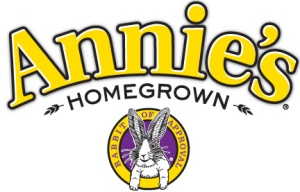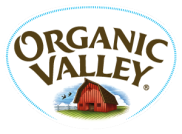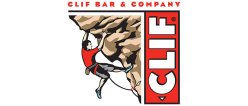I wrote this paper last Winter term, for a course called “Money in the Food Movement.” Note that Annie’s Homegrown has since sold to General Mills for $820M. I have the citations list for anyone who is interested.

Image from Sodahead
Since the 1960s, Corporate America has stepped up its involvement in philanthropic endeavors, from making monetary donations, to encouraging employees to volunteer their time, to providing in-kind goods and services. Instead of coming from a place of wanting to help others, however, corporate giving is now analyzed for its “return on investment,” and coordinated with other marketing and public relations efforts (Einstein, 2012). This has led some to view corporate philanthropy with suspicion, if not outright derision.
Meanwhile, American consumers have sidled up next to the corporations to embrace the notion that cause marketing is a viable means of helping their fellow humans, releasing them from further charitable responsibility. Critics like Slavoj Zizek have carefully outlined how insidious and ineffective substitution consumerism-based cause marketing campaigns are for actual community volunteering and charitable donations. Moreover, cause marketing is a poor (pun intended) substitution for social justice-oriented state and federal policy.
It’s outrageous (or, at least, ironic) when national companies like Cheesecake Factory, Ruby Tuesday, or Snickers use a dessert as the basis of their corporate donation to an anti-hunger nonprofit (Fisher, 2013). But what about successful “good” corporations—large companies that respect their workers, make environmentally responsible choices, and refuse to take cost-saving shortcuts that could jeopardize their integrity? Since their regular business practices already reflect a social conscience, how do corporations like Amy’s Kitchen, Annie’s Homegrown, Organic Valley, or Clif Bar frame and engage in corporate giving? What can their policies tell us about the current corporate climate—are they hippy-loving, tree-hugging anomalies, or the beginning of a new movement in the United States?
History of Mainstream Corporate Giving
Throughout the history of the United States, Americans have waxed and waned in their collective consciousness about “doing good.” Sometimes the predominant myth is one of bootstrapping one’s way to the top using one’s own ingenuity and grit, and then the pendulum swings and universal brother- and sisterhood prevails. Sometimes Americans focus on their own actions and sometimes they want the rulers of our country, via government and/or business, to take care of things. Sometimes government is favored over business, and sometimes the other way around. This process is always in flux, on the macro level as government administrations change, and on the micro level as individual people change their minds about what is most effective and/or “right.”
The history of “doing good” versus “doing well” is as old as the United States itself. From one generation to the next, business and society list from one side of the issue to the other, making regulations and then revoking them, and building empires that are then regretted or, occasionally, even dismantled (such as slavery). From the eighteenth-century Brown brothers to nineteenth-century founder of what is now Dun and Bradstreet to Andrew Carnegie, American economic discourse has struggled with the social responsibility that accompanies great wealth (Lewis, 2008).
The concept of corporate social responsibility (CSR) came to the fore in the early 1960s. It originally meant internal controls to demonstrate a concern for society’s issues (such as using recycled paper or offering discounted public transit tickets to employees); philanthropic efforts were but a small part of a larger picture (Fisher, 2014). CSR didn’t make a lot of headway until, ironically, the Reagan administration, when corporate tax cuts generated excess revenue at the same time that government entitlement programs were gutted, and directors of social-service organizations went to corporations to ask for financial donations (Einstein, 2012).
In the 1990s, corporate philanthropy executives caught up with the unexpected demand for their financial assistance, got their public relations heads on, and started dovetailing their programs with those of their marketing teams. They came up with what is now called “cause marketing:” fundraising campaigns that require a purchase, from which purchase price a (usually very small) percentage is donated in the consumer’s stead to a pre-determined cause. The United States has had a consumer culture for decades, and cause marketing fits right in—why donate money to or volunteer for a cause, when one can simply buy a product s/he wanted anyway?
Most if not all food-based corporations have a charitable giving program; critics consider these programs to serve as a sort of whitewashing of their regular business practices (pesticide- and fat-laden ingredients; labor issues, etc.) and to act as public relations “insurance” should the corporation find itself on the wrong side of the law in the future (Einstein, 2012; Fisher, 2014). A number of cause-marketing campaigns in the food system have received criticism for leveraging the purchase of unhealthy food to support the distribution of (assumedly) healthy food to community food shelves across the United States via the enormous nonprofit Feeding America (Einstein, 2012; Fisher, 2014).
What Constitutes “Good?”
The notion of a corporation concerning itself with ideals like employee welfare and environmental sustainability flies in the face of traditional capitalists, who work under the belief, established in 1916, that corporations exist solely to make money for their shareholders (Dodge v. Ford Motor Company, n.d.). Most capitalists work to wring as much profit out of the economy as possible, leaving ethics to policymakers: “Reformers have more impact when they use the political process to set the ground rules for business, rather than trying to cure capitalism of its basic instinct” (Lewis, 2008).
There are many criteria by which to determine an “ethical” company. EthiSphere uses a methodology that includes 25 percent Corporate Citizenship and Responsibility. Because of the “proprietary” nature of their methodology, it’s hard to discern what exactly might factor in, as two of the three honorees in the Food and Beverage category for 2013 are PepsiCo and Kellogg Company (EthiSphere, 2013).
And then there are the hollow actions of major corporations in the United States, of which many examples were given in this course. Perhaps the most egregious is the Cheesecake Factory’s “buy our sugar-and-fat-laden dessert (and, presumably, dinner and drinks) and we’ll drop a few coins in the Feeding America coffer” (Fisher, 2013). Amazon.com is perhaps the least disingenuous corporation: It unapologetically has almost no corporate-giving program at all (Martinez and Heim, 2013).
Mainstream CEOs have been able to virtually ignore CSR for two reasons: the recession caused anyone who had a job to be desperately grateful for it and disinclined to demand fringe benefits or other amenities. Also, the shopping public has not been particularly discerning on any factor except price point. A search on the Wall St. Journal web archive on March 8, 2014, for “corporate giving ethics” yielded just three results. It’s simply not a priority in the mainstream corporate world.
However, Generation X—the people who grew up supporting Greenpeace, PETA, the Nature Conservancy and other socially conscious nonprofits—has reached middle age. Members of this generation are starting to take over the nation’s businesses, or hitting a cruising altitude on the start-ups they launched in their late twenties or early thirties. Many profiles of this generation have been written; most note their independence. “To a Generation Xer, job security means having the kind of skills that make you attractive to the next company or enable you to start your own business … [they] are most attracted to working for small businesses that operate with a minimum of bureaucracy” (Foley and LeFevre, 2000).
Gen-Xers worry about social and environmental justice. They’ve transformed the back-to-the-land environmentalism of their parents into something that is urban and stylish. And, after enduring twenty years of patchouli-scented cashiers and clay-flavored all-natural toothpaste at their tiny, funky co-op, they can finally afford Whole Foods, which happens to be located in their now-gentrified neighborhood.
The Achilles heel of Gen-Xers is that they grew up in “mall culture,” so they still resonate with the Baby Boomer inclination to purchase their way to social justice. But, as consumers, they’re not afraid to make demands of large corporations, such as during Nike’s sweatshop protests. “The higher the profile of a company or brand, the greater the scrutiny of its activities and the higher the potential for it to become a target for pressure group action” (Arthur D. Little, Inc., n.d.). In fact, the very soul of capitalism is under scrutiny, and even the aforementioned Michigan Supreme Court ruling against Henry Ford has been challenged as misunderstood (Stout, 2008). As business owners, Gen-Xers are not afraid to push boundaries on appropriate work culture, acceptable profit margins, and investor relations.
Academics and public relations firms have studied the effect on corporate giving to ameliorate a corporation’s unfavorable reputation following an instance of fraud or other illegal behavior (Williams and Barrett, 2000; Tesler and Malone, 2008; Koehn and Ueng, 2009). What, then, is the incentive for “good” corporations that already have favorable reputations to expend financial and human resources on charitable giving?
“Good” Companies’ Corporate Practices
Below are synopses of the giving practices of four companies that are generally considered to respect the three Es: Environment, Economics, and Equity. I specifically chose companies that are not subsidiaries, like Odwalla, which is owned by Coca Cola, or Kashi, which is owned by Kellogg Co. (Howard, 2014). All of the company information was gathered from company websites. For this section, please refer to the citations listed per company name unless otherwise noted.
Amy’s Kitchen
Amy’s Kitchen is a privately owned company co-founded by wife-and-husband team Rachel and Andrew Berliner. Their grown daughter, Amy, for whom the company is named, now works as an “ambassador,” reaching out to new markets for their products. Amy’s Kitchen primarily makes canned soups and frozen meals, such as pizza, enchiladas and burritos, using exclusively organic ingredients. They are branching out into special dietary needs, with new products like gluten-free biscotti and non-dairy “frozen dessert” (presumably the best way to describe not-ice-cream).
The company supports educational and outreach efforts for agriculture and eco-literacy programs and is a substantial contributor to Committee on the Shelterless (COTS), a nonprofit agency that aids homeless families in Sonoma County. Amy’s is one of the largest donors to the Redwood Empire Food Bank and to the Oregon Food Bank, and donates annually to many other community organizations, including Meals on Wheels. Amy’s also participates in disaster relief, sending thousands of meals to hurricane and flood victims.
In 2013, Amy’s signed up to be a sponsor of Farm Aid, offering a sweepstakes (“I Heart Farmers”) for prizes including tickets to Farm Aid, other promotional items and, of course, Amy’s Kitchen products via a special website. While not directly charity, this effort does place Amy’s in the fray of pro-farmer sentiment. “Our vision and Farm Aid’s vision are closely aligned,” said Amy’s co-founder Andy Berliner in a press release about the launch, “and we’re confident that, together, we’ll continue to move the food industry in the right direction” (Fortune, 2013).
Annie’s Homegrown
Annie’s Homegrown’s staples for years have been their salad dressings and boxed macaroni-and-cheese, but they have expanded in foods that appeal to children, such as snack crackers and snack bars. They claim that 90 percent of their packaging is recyclable, which seems unlikely outside of an urban area with a progressive recycling program.
Annie’s main corporate giving programs support school gardens. The first, Growing Gardens of Goodness, provides grants and resources including a downloadable guide to gardens for which Annie’s partnered with the Center for Ecoliteracy. They also support FoodCorps, a New York-based service nonprofit that brings nutrition and garden information to schools. Annie’s also hosts a crowdfunding site, Annie’s Garden Funder, so students and parents can raise money for their school’s garden. Since 2008, Annie’s Grants for Gardens program, has donated funds to more than two hundred seventy schools. Other programs are Cases for Causes, one of their oldest grassroots programs, which provides schools and non-profit organizations with free cases of their product, and Sustainable Agriculture Scholarships, which provide financial assistance to students committed to studying sustainable and organic agriculture. They also provide financial support to organizations that promote organic farming and advocacy.
As of 2012, Annie’s is a publicly traded company (NASDAQ abbreviation is BNNY, for their mascot, a rabbit named Bernie). Their investment profile is explicit about the company’s commitment to treating its employees well, acting in a socially responsible manner, and supporting a rigorous corporate-giving program. “We are committed to growing our business and profitability, while staying true to our mission and core values.”
Organic Valley
Organic Valley is the brand registered to what started in 1988 as a cooperative of farmers in southwestern Wisconsin. Their slogan is “Organic. It’s all we do.” It could also be “Dairy. It’s all we do,” as their products are limited to milk, cheese, sour cream, et cetera. They do branch out into soymilk and eggs (though, eggs used to be, for whatever reason, considered “dairy” [Petersen, 2012]).
Organic Valley’s cooperative funds monetary and product gifts that support a specific list of causes: Family and independent farmers and rural community issues; organic research, education and promotion; parents, parents-to-be and child wellness; humane animal treatment; and environmental education and preservation.
Another program, Farmers Advocating for Organics, is a grant for projects or programs dedicated to furthering organic education, organic farming or product research, and organic advocacy. The farmer-members “voluntarily contribute to the fund on an annual basis, and a committee of CROPP farmers reviews proposals and decides how to distribute the funds.”
Clif Bar and Company
Clif Bar is a private company founded by Gary Erickson and now run by him and his wife, Kit Crawford. Erickson decided to start a snack-bar company on a bike ride, and all the company’s products are designed for on-the-go athletes: Small, dense, highly nutritious energy bars. Since its founding, the only innovations have been to create different styles of bar: one directed at children, one directed at women (at least it’s not pink), and a “one-shot” gel concoction.
Clif Bar’s website lists three sub-categories of corporate responsibility pledges: Planet, Food, and Community. Under Planet, Clif Bar has launched numerous environmentally sound corporate policies and pursued innovative partnerships: with American Forests to replant trees; Escape from Alcatraz, a carbon-neutral triathlon; NativeEnergy, a wind farm; Rainforest Alliance for cocoa products. The company joined Businesses for Innovative Climate and Energy Policy in 2009. The Food section is less about corporate giving and more about statements of integrity regarding their ingredients and business partnerships.
The Community section is more complex. In 2008, Clif Bar launched an effort called In Good Company, and traveled to New Orleans to assist with rebuilding efforts. This belief that “collaboration among businesses can be a powerful force for positive change” has since led Clif Bar’s staff to invite other socially conscious businesses, including Amy’s Kitchen and Annie’s Homegrown, to dozens of community-building projects that fall under the general categories of Healthy Food, Safe Housing, and Environmental activism.
Crawford’s view of these efforts: “Through the act of simply extending a hand—not just once in a while but as a regular part of life—we are changed as individuals and as a community.”
Volunteerism is encouraged amongst Clif Bar employees. The company has donated millions of dollars’ worth of product to events, food pantries, homeless shelters, and disaster-relief organizations. The company participates in 1% for the Planet, through which it donates 1 percent of its profits to environmental-activism nonprofits.
Erickson and Crawford spun off a foundation in 2006 that “supports innovative small and mid-sized groups working to strengthen our food system and our communities, enhance public health, and safeguard our environment and natural resources.” In 2009 the Clif Bar Family Foundation launched Seed Matters, an initiative to develop and protect organic seed diversity, with a $500,000 donation. Most of their grants are capped at $8,000, and they occasionally invite nonprofits with which they have a relationship for larger grants. Their grant funds are available nationally, but they have so far served about half the states, with the vast majority (131 of 200 total grants) going to organizations in California.
Analysis
What is most significant about the corporate-giving programs of these four socially responsible companies is that they have them. Any of them could simply point to their pro-Three Es corporate practices and rest on their laurels.
All of the companies give away a lot of product. They also fund specific causes: school gardens, or disaster relief. Creating philanthropy guidelines is a common strategy to limit the number of requests that are made of a business, and also to leverage the fit as a way of appealing to their customer base.
It’s understandable that Organic Valley doesn’t have a vibrant giving practice: As a cooperative that comprises many small farms, it would be difficult to require all its members to forgo profits that would benefit the OV name and not the individual farms. On the other hand, that is the kind of return-on-investment thinking that brought us the “use your American Express card and save the Statue of Liberty” campaign (Einstein, 2012). In Organic Valley’s defense, studies have shown that small farmers tend to feel they themselves are on the edge of poverty, and not empowered to be charitable in this manner (Allen et al., 2006).
Clif Bar is the exception and, it seems, a true pacesetter in the world of socially conscious capitalism. Owners Erickson and Crawford sketched out their community-involvement plan, as part of their original business plan, expanding the usual triple bottom line to five elements: Sustaining “our” planet, brands, business, people (employees), and community (C. Cyphers, personal communication, March 18, 2014). Unlike most corporations, which spend tens of thousands of dollars on vibrant public relations campaigns to advertise their civic-mindedness, Clif Bar’s executives prefers to deflect attention from themselves and instead tell the stories of company partners. “You can imagine this creates an interesting dynamic internally. We have a marketing department, but the owners are always downplaying what we’re doing” (C. Cyphers, personal communication, March 18, 2014). At Clif Bar, it might possibly be 100 percent sincerely about doing good.
Conclusion
With studies of consumer habits as well as evidence and testimony of CEOs, it seems that the United States might be beginning a swing toward benevolence and compassion.
In a 2006 study, Amato and Amato found that people reported an interest in shopping with socially responsible companies, and even to switching brands to a socially responsible company (2006). The result of this bottom-up pressure to at least appear to care about social responsibility is evident: Starbucks touts its dedication to the neighborhoods in which it has stores, after successfully routing hundreds of independently owned coffee shops during its growth phase (Starbucks, n.d.). Archer Daniels Midland, notorious for its price-fixing and other corrupt practices, claims to have directed part of $44M to “Promote sustainable agriculture” since 2009 in its 2013 Corporate Responsibility report (United States Dept. of Justice, 2013; ADM, 2013).
Cassie Cyphers, community planet programs manager at Clif Bar, agrees. “I think consumers are smarter than most people think; they want to know what they’re buying into” (C. Cyphers, personal communication, March 18, 2014).
The Milton Friedman-style capitalism of the twentieth century may be on the wane. Grassroots demand for labeling of genetically modified organisms has, so far, been relatively unsuccessful but even Monsanto is exploring new avenues (Paynter, 2014). The International Monetary Fund, noting in a recent report that “the global concentration of wealth that has taken place over the past three decades has increased in recent years, and today stands at modern record levels,” recently called for global wealth re-distribution (Biron, 2014).
Some people are realizing that cause marketing may have more to do with publicizing a brand than assisting a charitable cause, and it’s become so ubiquitous as to have lost its affect as a special philanthropic activity. “Much of today’s corporate philanthropy is mere marketing, so common that it doesn’t help a company stand out,” says Paul Schervish, director of Boston College’s Center on Wealth and Philanthropy in a Seattle Times article (Martinez and Heim, 2013).
The 2013 Harris “Reputation Quotient” Poll compares the drivers for “most visible” companies in 2011 and 2013. The differences are telling. In 2011, consumers were looking for:
- Admire and respect
- Trust the company
- High ethical standards
- Outperforms the competition
- Good value for the money
In 2013, these had shifted:
- Outperforms the competition
- Admire and respect
- Trust the company
- Plays a valuable social role
- Good company to work for
- Good feeling about the company
In some ways, it appears that consumers were more interested in CSR. However, the shift from “high ethical standards” to “good feeling about the company” is telling. Consumers are more interested in how their purchase makes them feel than to know whether it was truly ethical. This could explain how known Three Es violators such as Amazon.com and The Coca-Cola Company are numbers 1 and 6, respectively (Harris Interactive, 2013).
However, the addition of “good company to work for” is indicative of a revival of the turn-of-the-21st-century attitude toward work that was bolstered by the dozens of high-technology companies that were skyrocketing at the time. This was the birth of foosball tables, napping couches, and beer fridges in the workplace, and having your black lab snoozing under your desk. Much of that cavalier attitude was quashed after the recession of 2009. While these workplaces may have gone a little too far toward a frat-house sort of feel, they did successfully capture the idea of work/life balance (so long as you were childless, and probably also single). Tempered by 9/11 and the recession, the version that is returning may be more mature and community-focused.
A new type of CEO, hailing from the Gen X and Millenial generations, is leading the swing toward socially responsible corporations. These companies are very much for-profit entities; however, they take care of their employees, their environment and their community before counting their profits. “’People today — especially young people — want to work for organizations they feel good about,’ [Bill] Gates said last year at an event organized by the United Way.” (Martinez and Heim, 2012). And if they can’t find the right employer, they aren’t afraid of starting their own company (Depew, 2013).
“This idea of companies being transparent is new” (C. Cyphers, personal communication, March 18, 2014). As what constitutes a “good” corporation changes, and as customers understand the benefit of a triple bottom line and then begin to demand it in greater numbers, corporations will change. Hopefully for the benefit of the planet and all its inhabitants.



